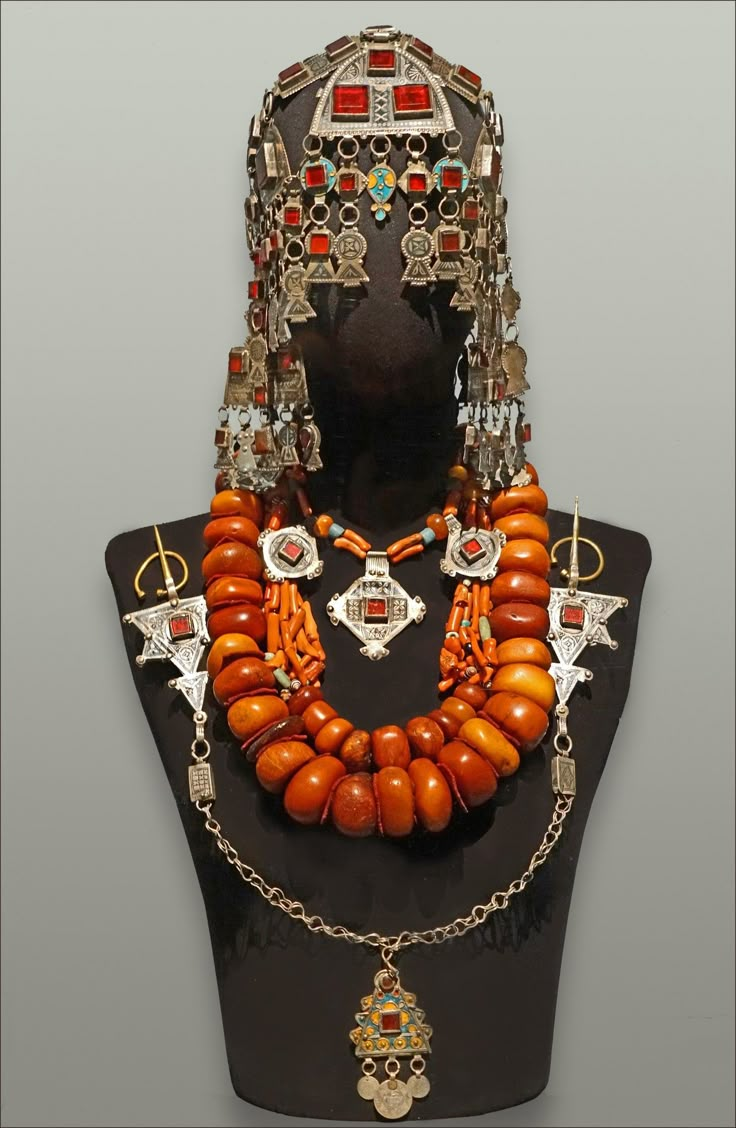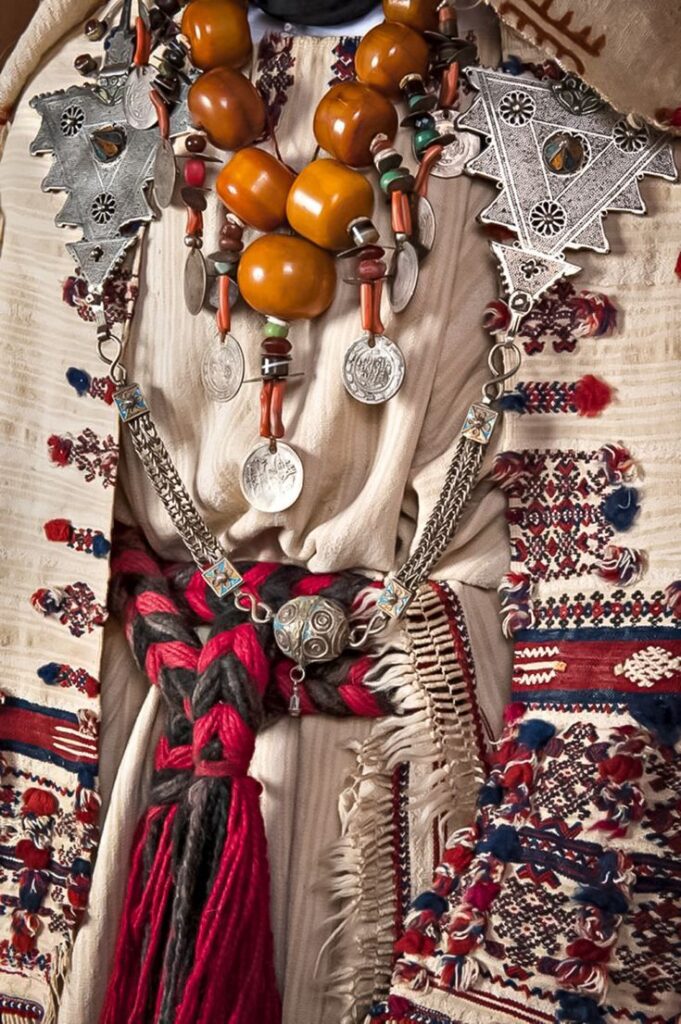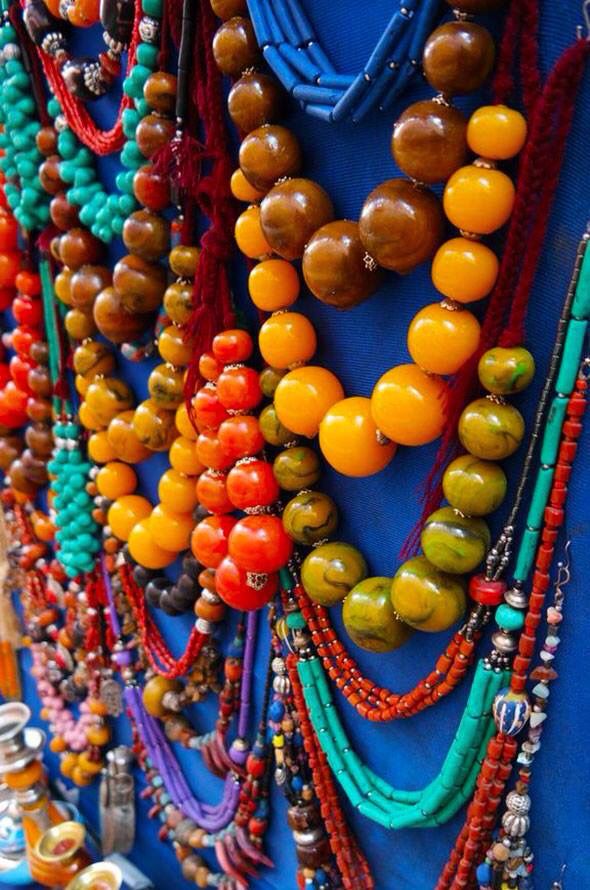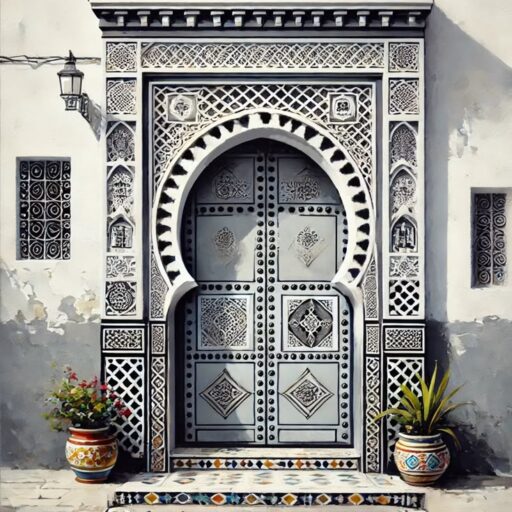When it comes to style with soul, Moroccan jewelry stands in a league of its own. It’s not just about looking good—it’s about telling stories, honoring heritage, and wearing your culture with pride.

From the bustling souks of Marrakech to the chic showrooms of Casablanca, accessories in Morocco reflect a fascinating blend of tradition and trend. You’ll find Amazigh-inspired silver bangles etched with ancient symbols, bold filigree earrings that whisper of royal courts, and sleek gold rings with modern flair.

Opening Scene A bustling Moroccan souk, sunlight glinting off gold and silver
Narrator In the heart of Morocco, where tradition meets elegance, jewelry is more than an accessory—it’s a story.”
Cut to close-ups of intricate earrings, bangles, and necklaces being handcrafted] Narrator: “From the timeless beauty of Amazigh silverwork to the modern sparkle of Casablanca’s luxury boutiques, Moroccan jewelry captures the soul of a culture rich in heritage and artistry.” Scene shifts to a woman trying on a statement necklace in front of a mirror] Narrator: “Whether you’re drawn to bold, handcrafted pieces or delicate gold accents, each creation is a celebration of identity, craftsmanship, and beauty.” Montage of jewelry from shops like Rafinity, Yalmas, and Excellence”Discover your signature style in Morocco’s finest ateliers—where every gem tells a story, and every accessory becomes a legacy.” Closing shot: Sunset over a Moroccan city skyline, with a silhouette of a woman wearing layered jewelryThe Timeless Charm of Moroccan Jewelry” When it comes to style with soul, Moroccan jewelry stands in a league of its own. It’s not just about looking good—it’s about telling stories, honoring heritage, and wearing your culture with pride. From the bustling souks of Marrakech to the chic showrooms of Casablanca, accessories in Morocco reflect a fascinating blend of tradition and trend. You’ll find Amazigh-inspired silver bangles etched with ancient symbols, bold filigree earrings that whisper of royal courts, and sleek gold rings with modern flair. Each piece is a masterpiece shaped by generations of craftsmanship. Whether it’s handcrafted by an artisan in the Atlas Mountains or curated by a designer in Rabat, Moroccan jewelry is defined by its authenticity and emotion. What’s trending? Layered necklaces mixing charms and gemstones. Colorful enamel pieces that catch the light and turn heads. And always—the classic khamsa and evil eye motifs for protection and blessing. Whether you’re dressing up for a wedding, adding flair to a casual outfit, or collecting heirlooms for the future, Moroccan accessories are more than adornments—they’re declarations of identity.

Moroccan jewelry is rich in meaning
- Khamsa (Hand of Fatima): Protection from the evil eye.
- Fibulae: Brooches symbolizing femininity and status.
- Geometric patterns: Represent fertility, spirituality, and tribal identity.
💍 Regional Styles
- Berber jewelry is bold, heavy, and symbolic—often worn during weddings and festivals.
- Urban styles from Fez, Rabat, and Marrakech are more delicate, gold-based, and influenced by Arab-Andalusian aesthetics.AMAZIGH

Modern Moroccan designers are blending traditional motifs with contemporary fashion, keeping the heritage alive while appealing to global tastes. Whether it’s a chunky silver cuff or a dainty gold pendant, each piece carries centuries of artistry and meaning.Blog
The Story Behind Amazigh Jewelry”
Long before Morocco’s modern cities and global fashion took the stage, the Amazigh people—indigenous to North Africa for thousands of years—crafted jewelry that was as symbolic as it was stunning.
More than just beauty, Amazigh accessories speak a language of tradition, strength, and spirit. Each cuff, pendant, or fibula holds centuries of history, often passed down from mother to daughter like living heirlooms.
Why silver? Among the Amazigh, silver is more than a metal. It’s believed to carry purity and protection. That’s why many traditional pieces—especially from the High Atlas and Souss regions—shine not with gold, but with intricately engraved silver set with coral, amber, or turquoise.
Symbols like the khamsa (hand of Fatima), crescent moons, and geometric patterns aren’t chosen at random—they guard against evil, celebrate femininity, and express tribal identity. The famous tizerzai (fibula brooches) are not just fasteners; they’re declarations of strength and grace.
Even today, Amazigh jewelry influences modern design across Morocco. From Tiznit’s ateliers to international catwalks, artisans continue to blend old world technique with contemporary style—keeping their ancestral voice alive.
Because in every Amazigh accessory, there’s not just artistry, but a proud culture carved in silver.

